Retro Roadsters Revisited: BMW R NineT Pure Vs Honda CB1100EX Vs Triumph Bonneville T120 Black
A Return Ride by the MO Retreads
When last we visited this class three years ago, it wasn’t exactly this class but it was close. Triumph’s new Bonnevilles hadn’t been born yet, so a Moto Guzzi Griso 8V completed the threesome, along with the then-new Honda CB1100 and the original BMW R nineT.
In that comparo, the BMW narrowly carried the day over the Guzzi (79.2 to 78.7%), with the Honda bringing up the rear with a 72.2% Scorecard rating. The BMW would go on to become our Best Standard of 2014. The Griso is still as greasy good as ever, but we threw it over this time for the new Triumph Bonneville T120 Black, which slots nicely into the $12k nostalgia-bikes-for-old guys-which-actually-perform category.
In fact, the Bonnie really completes the old-guy trifecta. These three are modern interpretations of what the ’60s were all about and long before that, really. BMW built its first Boxer (which was its first motorcycle) in 1923. Triumph built its first Speed Twin, the Bonneville’s granddad, in 1938. And Honda’s first CB750 of 1969 laid down the pattern for so many more thousands of Japanese bikes to come.
Shiny Objects
Naturally, we rode the pee out of these three on some of our favorite earth curvature because that’s just what we do (and all three work surprisingly well if you’re easily surprised), but most of us can agree that these three are aesthetic more than mechanical exercises in spite of how well they perform, maybe even self-congratulatory homages to the factories that built them in honor of the fact they’re still around lo these many years later – even if Triumph took a few years off.
I’ve ridden the original versions of all three of these, and the new bikes are orders of magnitude better than the oldies in every way. Since most of the people who were around in the ’60s have aged out of riding, these bikes’ styling must walk a fine line between nostalgia and modern. Which one appeals to you (if any), however, is entirely subjective. Just like always.
I’m actually killing time now waiting for Evans and Duke to fill out the Scorecard, but I think the three of us picked three different bikes as our favorite. Oh! The results are in…
The T120 Black is just like the other T120 Bonnevilles – including its $11,800 bottom line – except for its murdered-out (lack of) paint, a theme which extends right through its dual peashooter exhaust pipes and wheels. (Actually there are two Blacks, a shiny Jet Black and a furry Matt Graphite like this one.)
Tacking EX onto CB1100 gets you a beautifully painted new seamless fuel tank, new wire wheels, brushed aluminum sidecovers and trim bits, a new Dual Bending Valve Showa fork, an airbox/intake retuned for a bit more low-rpm power, shorter, slimmer dual mufflers… and a $12,199 price tag. It’s the only player with real steel fenders, front and rear.
The R nineT Pure is BMW’s attempt to bring the price of the original nineT down a tad, by substituting a steel gas tank for an alloy one, etc., and it works: $11,995. But then the price on our tester goes right back up with the addition of those $2496 wire-spoke wheels and $250 heated grips: $14,742. You have to squint a little to see the original 1923 R32 Boxer in there, but it’s there.
BMW R nineT Pure
If you’re looking for the fastest, sportiest bike here, the BMW is it. Its 94 horsepower is down a bit from the original R nineT of 2014 (We think due to Euro 4 regs –Ed.), but far ahead of the other two bikes here, and the BMW’s 72 pound-feet of torque is right up there with the Triumph. Stir that in with the lightest weight (by far) here of 490 pounds all gassed up, and away you go. Impromptu, non-scientific top-gear roll-ons against the other two bikes here have the BMW leaping easily ahead.
Our complaint about the original nineT’s too-soft fork has been addressed, and you can flog this one down your favorite winding road just as hard as your little Bavarian heart desires. Sometimes knowing what your heart desires is the hard part. Ridden alongside the CB and the Bonneville, the BMW seems a bit aggressive and pushy, like you’re on a relaxing fishing trip with a guy who won’t get off the phone. You’re scaring the fish! Some like the Boxer’s droning exhaust note (which you can really hear on this bike when you open the throttle), others don’t. A fair amount of popping on decel reinforces its more rambunctious nature.
Evans says, “I don’t care what Burns says about flatulence, I love the Beemer’s exhaust note, particularly when echoing off a canyon wall as I let its torque curve muscle me out of a corner.”
The short final-drive gearing that gives the nineT such immediate lunge also means you’ll be shifting gears more, and while it’s a swift bike for sure, it’s not the easiest one to be smooth upon, thanks to its shaft drive contributing more mass to the drivetrain. You’ll need one finger of clutch at each upshift to keep it smooth, although it has the heaviest clutch pull by far.
It’ll leave the Triumph and Honda behind, but you’ll be working harder to do it – in a class that’s more about having a leisurely ride in the country than it is about getting there first. Or is it? Possibly this is just us trying to put the Pure into a box it doesn’t belong in: For sure, it’s the sportier outlier of this threesome.
“The BMW is simply a sportier motorcycle than the others in this group,” Duke pipes in. “It’s far more playful and rambunctious, and it feels like it’s in an adjunct class rather than fitting in seamlessly. Seamless fuel tank, though.”
Speaking of a leisurely ride in the country, that short gearing results in quite a bit of engine vibration creeping into the controls and tank if leisurely pushes much past 75 mph or so. Keeping firm control of all that power pulsating through the Paralever rear end requires shock springs on the stiffish side. And the not-so-plush, thin seat joins forces with the lowest handlebar here to let you not forget you’re riding a German motorcycle, not the Orient Express, when the road is long and straight.
Brasfield again: “When performing sporting duties on back roads, the firmness of the BMW’s suspension is appreciated, though it could use a little more damping up front. However, get onto a freeway or anywhere that the bike will contact bumps at speed, and the shock’s harshness rears its ugly head. A premium shock swap would probably take care of this issue.”
Add it all up, and the bike that beat the CB and Guzzi Griso in our last Retro Roadster comparo, finishes last this time on the MO Scorecard – albeit by a much slimmer margin – in spite of cleaning up in the Objective portion of the card thanks to its having the most power and least weight. Could this be the result of the MO test crew being three years older? Orrrr, maybe it’s just me, JB: Duke’s Subjective scores have the BMW on top, 0.5 points ahead of the second-place bike; E. Brasfield also rates it #1, a scant 0.25 point ahead of #2. My Scorecard has it, ahem, 9.25 points behind the winner. Have I become the Clarence Thomas of MO?
BMW R nineT Pure
+ Highs
- Most powerful and lightest
- Avant-garde yet ancient
- Raw Boxer experience
– Sighs
- Short gearing = more vibes
- Hard-edged seat and rear shock
- Sometimes you feel like a jerk
Triumph Bonneville T120 Black
So smitten were we by Triumph’s entire line of upgraded “Classics” last year, we went ahead and named the whole dang Bonneville series our coveted Motorcycle of the Year for 2016 – a group of bikes that includes the Street Twin, Thruxton, T100, and this bike, the T120 Bonneville, which is packing the High Torque version of the new 1200cc, 270-degree liquid-cooled parallel-Twin.
Seventy horsepower at 5500 rpm doesn’t make the T120 a firebreather (and it’s lights out only 700 rpm later), but 71.4 lb-ft of torque at just 3400 rpm does define this motorcycle. The BMW makes almost the same torque, 71.8 rear-wheel Dynojet lb-ft, but not until 5000 rpm. On the Bonneville, you just release the light-levered slip-assist clutch and off you burbily, effortlessly blat. Six speeds in the gearbox are really more than you need, but they’re all so willing to trade places, why not? The Triumph nearly swept the Engine and Transmission/Clutch categories, winning both by wide margins.
Once rolling, you can just barely feel the big Twin smoothly rolling over 3500 rpm at 80 mph in sixth gear, a cog that’s good for anything from 35 mph to whatever the Triumph can manage on top. Well over the ton. The good ship Bonnie remains nice and smooth at 90, though by then the optional flyscreen would be good to have.
The Bonneville did not win the Suspension category, but it finished a close second behind the Honda. The progressively wound springs on its rear shocks, and the Kayaba fork up front, endow it with probably the best ride in the bunch, when you’re riding around town. Attacking canyon twisties, okay, not so much – but I don’t recall anybody falling much off the pace when they were aboard the T120 on the way up to Crystal Lake. It did fall down in the Handling category, mostly because of steering responses some feel are much slower than the other bikes.
“There’s so much to like and enjoy with the Bonneville, but it’s surprisingly slow to steer, which makes it feel clumsy,” Duke whinges.
Brasfield: “The good news is that the Triumph has the best suspension of the group, providing a super comfy ride on the freeway, soaking up all little road imperfections. The bad news is that the Bonnie’s narrow handlebar couples with the 18-inch front wheel to make the bike steer like a truck. I’m pretty sure that a wider bar would help alleviate this issue, making it an easy fix.”
Anyway, if you just looked at the thing, you’d never expect the Bonnie to negotiate Highway 39 as rapidly as it does. Once through the initial soft part of travel, the thing bucks up, and you can feel the stiff new frame at work, keeping those classic Pirelli Phantom-look tires pressed to the pavement.
Though she’s no lightweight, all that torque at only 3400 rpm, and super-smooth throttle response from its ride-by-wire system, lets the Triumph pull back up to whatever it’s behind at corner exits. All in all, for being a “classic,” it’s also a really fun thing to flog.
In every functional category, the Triumph is right up there. Where it lost points was in the Quality/Fit and Finish, Cool Factor and Grin Factor categories (the last two of which are totally Subjective). We’ve spent a lot of pixels before going on about how nicely put together all the new Triumphs are, and it’s true, but next to the competition here the Bonnie looks a tad outclassed. It’s the only bike here with an unsightly gas tank seam. Maybe one of the shinier colors, with chrome instead of matt black, would’ve gotten us more worked up? Three years ago, we criticized the CB1100 for being bland. Strange how things have a way of changing.
Triumph Bonneville T120 Black
+ Highs
- Looks old, works futuristically
- Super easy to ride with all that torque
- Superbly comfortable
– Sighs
- A bit lacking in the excitement department
- How long have we been married?
- Does wanting one that’s not Black make us racist?
Winning: Honda CB1100EX
Which brings us to the surprise winner of this little comparo, by less than a percentage point over the Triumph. When Honda premiered this EX version last EICMA, we were a little underwhelmed and feeling deprived at not getting the RS version in the US. Seeing the EX in the flesh, and riding it, really dispelled that feeling. Even Duke and Brasfield, who both ranked the BMW #1 in aggregate Subjective points, ranked the Honda #1 in Quality/ Fit and Finish by a mile. It also won Cool Factor and tied the BMW for Grin Factor. In this class, how you feel about motorcycles like these is way more important than the last nth of backroad performance.
It’s like Honda took our lukewarm welcome of the original CB1100 personally, went back to the drawing board, and said “take this bitches!” I can’t remember the first time I whined about big ugly seams on gas tanks, but this is the first time Honda’s ever bothered to remove it, and the result transforms the look of the whole bike – especially given the tank’s impeccable sparkly red paint. Well, that and the new brushed aluminum pieces, including the chainguard and sidecovers, the alloy rims. This one is tons nicer than the original CB1100 everywhere you look, not to mention the original CB750.
Evans postulates: “The Honda is the best looking bike here, giving a truly authentic feel to the era from which the CB1100 hails. The seat is just about perfect, proving that with this category bike, you can have a stylish seat that offers the appropriate level of padding. The Triumph comes in second while the BMW’s seat is a distant third.”
The beauty is more than skin deep. The new Showa Dual Bending Valve fork retains the comfy couchness of the original 1100 when you’re just tooling around, while making the bike way more controllable and reassuring come peg-feeler dragging time.
With the centerstand, the CB’s even heavier than before, at 556 pounds, and the weight alone restricts it from being as quick as the Beemer up Highway 39. But the Honda doesn’t mind at all putting out the effort to try and keep up: Getting its maximum effort takes way less sweat than riding the BMW, probably because it’s not just heavier but also less powerful. With less physics going on, it’s way easier to swoop the Honda smoothly from corner to corner like a giant bird of prey.
“Despite the rather large weight number, the CB1100 rolls over into corners with ease and reassuring linearity,” Duke reassures. “Its narrow tires help it feel dozens of pounds lighter than it is.”
The engine’s non-aggressive power delivery is well complemented by brakes with soft initial bite but plenty of power, which makes blending brakes and throttle super smooth. The suspenders could use a bit more rebound damping, but then you’d lose the sweet in-town ride. The word genteel almost fits, a descriptor the CB could share with the Triumph. Both are big bikes that feel really light on their feet. Tires.
For burbling around town in not quite so big a hurry, the CB makes a clean sweep of the Comfort/ Ergonomics category, finishing 3.33% ahead of the also super-comfy Triumph and fully 10% ahead of the BMW on the Scorecard. The seat’s a magic carpet, the ergos are perfectly transparent for most riders. The only thing you could complain about is a little engine buzz at higher speeds, but Evans didn’t, so how bad could it be?
Burbling wise, there is a bit more noise coming out of the shiny duals, which are shorter and skinnier than before, and which work with shortened intake tracts to give the 1140cc Four more low-rpm grunt: You can feel it, the new engine pulls harder from 2500 rpm, even if the Dynojet tells us it’s picked up just less than a single lb-ft of torque. Somehow, that turns into nearly 5 more horsepower; now we’re at 88, but still at a barely-breaking-a-sweat 7500 rpm. So yeah, it’s not a fast motorcycle, but it’s by no means a slow one – and its powerband is marked by amazingly clean curves on the chart, with zero peaks and valleys. Which is just how the CB feels from the saddle. That makes it an easy bike to ride smoooothly, whether trying to keep up with the BMW in the curves or taking your SO to the beach.
The mighty MO Scorecard does not lie, and what the heck, it’s nice to see the bottom rail on top this time. It’s not just nice, it’s kind of amazing. I don’t remember a bike getting a few upgrades, and suddenly swooping from the bottom of the pile to win out over two others as good as the new Bonneville and the nineT. The key is, these are really nice upgrades. Suddenly I have a new respect for the codgers who babble on about the original CB750. But don’t encourage them.
Honda CB1100EX
+ Highs
- Nothing but polished steel, brushed alloy and deep paint
- Helmet lock, bungee hooks, grab rails, centerstand
- Fuel tank reminiscent of a vintage Norton
– Sighs
- Some people always want more power
- Too nice to get dirty
- Lots to love at 556 lbs.
Retro Roadsters Revisited ScoreCard | ||||
|---|---|---|---|---|
BMW R nineT Pure | Honda CB1100EX | Triumph Bonneville T120 Black | ||
Price | 78.0% | 94.3% | 100.0% | |
Weight | 100% | 88.1% | 90.2% | |
lb/hp | 100% | 83.2% | 69.0% | |
lb/lb-ft | 100% | 81.9% | 89.5% | |
Total Objective Scores | 92.7% | 88.3% | 89.8% | |
Engine | 85.4% | 84.2% | 89.2% | |
Transmission/Clutch | 80.0% | 85.8% | 91.7% | |
Handling | 87.5% | 87.5% | 80.8% | |
Brakes | 90.8% | 86.7% | 84.2% | |
Suspension | 82.5% | 90.8% | 89.2% | |
Technologies | 80.0% | 77.5% | 82.5% | |
Instruments | 80.0% | 85.0% | 85.0% | |
Ergonomics/Comfort | 80.0% | 90.0% | 86.7% | |
90.8% | 95.0% | 86.7% | ||
Cool Factor | 86.7% | 90.8% | 85.0% | |
Grin Factor | 86.7% | 86.7% | 82.5% | |
Kevin’s Subjective Scores | 84.6% | 84.2% | 83.8% | |
Evans’ Subjective Scores | 86.7% | 86.5% | 86.0% | |
John’s Subjective Scores | 82.7% | 90.4% | 88.3% | |
Overall Score | 86.3% | 87.3% | 86.8% | |
Retro Roadsters Revisited | |||
|---|---|---|---|
BMW R nineT Pure | Honda CB1100EX | Triumph Bonneville T120 Black | |
| MSRP | $14,742 | $12,199 | $11,800 |
| Engine Type | 1170cc horizontally opposed air-/oil-cooled Boxer Twin; DOHC, 4 valves/cylinder | 1140cc air-/oil-cooled inline-Four; DOHC, 4 valves/cylinder | 1200cc liquid-cooled parallel-Twin; SOHC, 4 valves/cylinder, 270-degree crankshaft |
| Bore and Stroke | 101.0 x 73.0mm | 73.5 x 67.2mm | 97.6 x 80.0mm |
| Compression Ratio | 12.0:1 | 9.5:1 | 10.0:1 |
| Rear Wheel Horsepower | 93.6 at 7700 rpm | 88.3 at 7500 rpm | 69.8 at 5500 rpm |
| lb/hp | 5.24 | 6.30 | 7.78 |
| Torque | 71.8 at 5000 rpm | 66.8 at 6300 rpm | 71.4 at 3400 rpm |
| lb/torque | 6.82 | 8.32 | 7.61 |
| Transmission | 6-speed | 6-speed | 6-speed |
| Final Drive | Shaft | Chain | Chain |
| Front Suspension | 43mm fork; 4.9 in. travel; no adjustments | 41mm telescopic Dual Bending Valve fork; spring preload adjustable, 4.2 in. travel | 41mm cartridge telescopic fork; 4.7 in. travel |
| Rear Suspension | Single shock; spring preload, rebound adjustability, 4.7 inches of travel | Twin Showa shocks; spring preload adjustable, 4.5 in. travel | Twin KYB shocks; spring preload adjustable; 4.7 in. travel |
| Front Brake | Dual 320mm disc, four-piston calipers, ABS | Dual 296mm disc, four-piston calipers, ABS | Dual 310mm disc, two-piston calipers, ABS |
| Rear Brake | 265mm disc, single-piston caliper, ABS | Single disc, single-piston caliper, ABS | 255mm disc, two-piston caliper, ABS |
| Front Tire | 120/70 ZR 17 | 110/80-R18 | 100/90-18 |
| Rear Tire | 180/55 ZR 17 | 140/70-R18 | 150/70-R17 |
| Rake/Trail | 26.4º/4.1 in (105mm) | 27.0°/4.5 in. (114mm) | 25.5°/4.1 in. (105.2mm) |
| Wheelbase | 58.8 in | 58.7 in. | 56.9 in |
| Seat Height | 31.7 in | 31.2 in. | 30.9 in |
| Curb Weight, MO scales | 490 lb. | 556 lb. | 543 lb. |
| Fuel Capacity | 4.5 gal | 4.4 gal | 3.8 gal |
| Fuel Mileage | 38 mpg | 47 mpg | 48 mpg |
More by John Burns



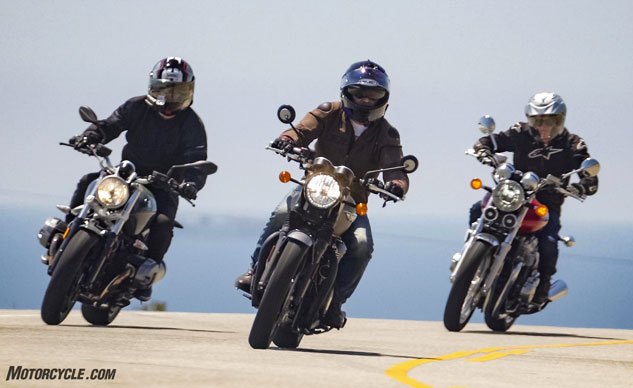
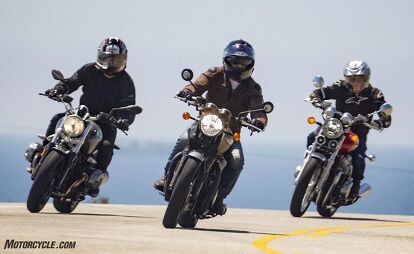





































































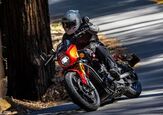
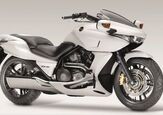
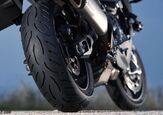
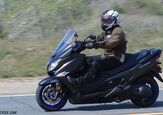
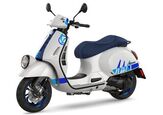
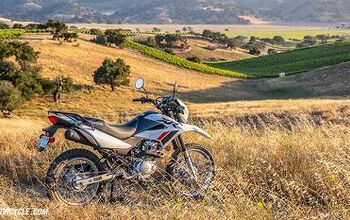
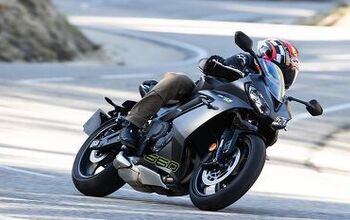
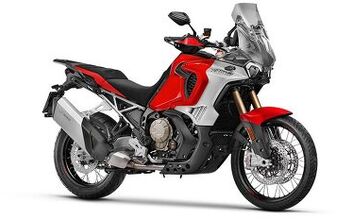
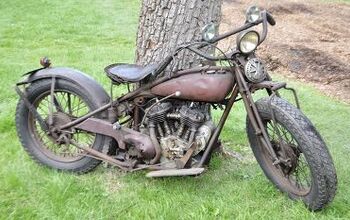
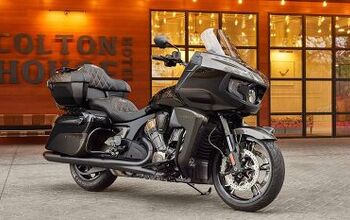
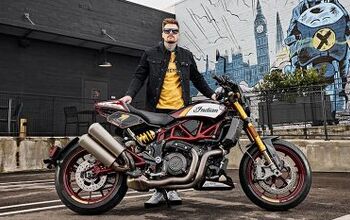
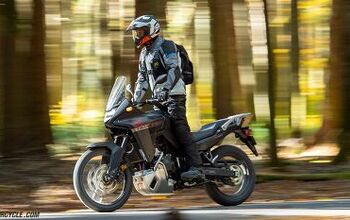
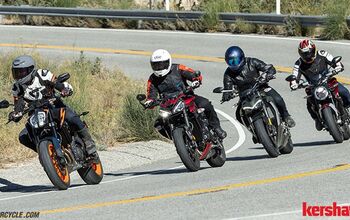
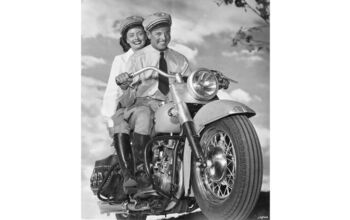

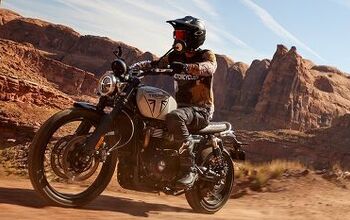
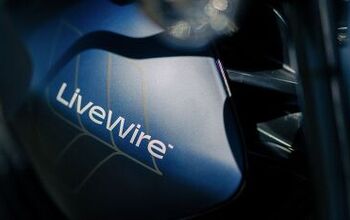
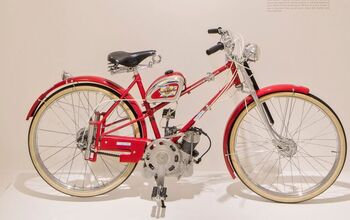
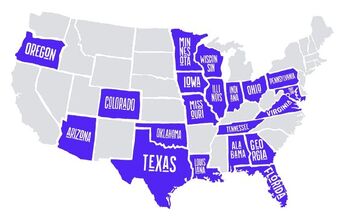
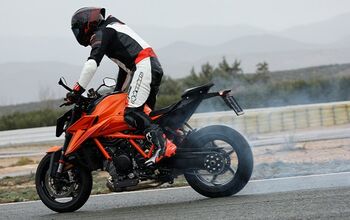
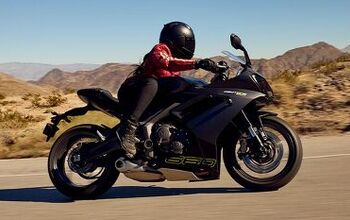
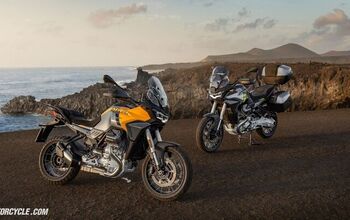
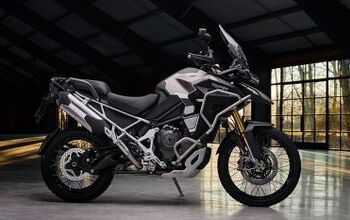
Comments
Join the conversation
This article was instrumental in me determining my next bike. I have been eyeing the CB1100 for a while but was getting concerned with the lack of after market support and Honda not putting out a 2018 model. When I started looking more closely at the Bonneville T120 i got a lot more interested and happy to see Triumph has a lot of options to add to the bike. After the test ride on the T120 I was sold as it has the power where I want it and it is very smooth and comfy. It looks great and I am loving the added cruise control and Vance and Hines Pipes. This bike puts me in my happy place every time I ride.
Something you guys missed during the review is that the seat has loops that can be pulled out so you can attach a cargo net that way. Has been very helpful when I commute as i hate to wear my backpack when riding.
I know this is quite an old review by this point, though I'd still like to chime in. I think if the guys had an alloy wheel version of the R Nine T, the score cards would have painted the Pure in a better light. First, the price for the spoked wheels is ridiculous. I have ridden several R Nine Ts beyond mine, and the spoked wheels nearly kill the handling characteristics of the bike, in my opinion. The additional few pounds of unsprung weight make it more of a bear to throw into a corner. My bike has the alloy wheels, and it's simply and objectively a better handling motorcycle. The lighter wheel also contributes to taming the stiff rear shock. I find the suspension rather compliant. If the guys liked the R Nine T handling characteristics with the spoked wheels, they would have loved it with the alloy wheel. That would also bring the MSRP down to about $12,250. I think that one solution that addresses those two gripes really transforms the value of the bike. As far as the hard seat, I can't argue that. It's simply not the most pleasant. As for the short gearing, I personally value it. The shaft drive system of the R Nine T was taken from the R1200R with a final drive ratio of 2.75. The R Nine T final drive ratio was shortened to 2.91. When I rode an R1200R back to back with my R Nine T Pure, I found the extra torque in the 9T quite lovable. I also find I4 motors to be underwhelming and mundane. Not bad, just not unique. The parallel twin of the T120 is great, but the K23 boxer has more character. Not to mention, I'd like to emphasize the point that the "camhead" K23 boxer has literally taken people millions of miles around the planet, and very reliably. These motors have the longevity of a diesel tractor motor. All in all, I think the R Nine T Pure is the better bike, by far. That concludes my biased rant. Please, don't misconstrue my words as indicating that I think the other bikes are bad bikes. They are fantastic by any objective, and many subjective views. Most modern motorcycles are. Hopefully my words have, at least, brought more or a new perspective to the table.